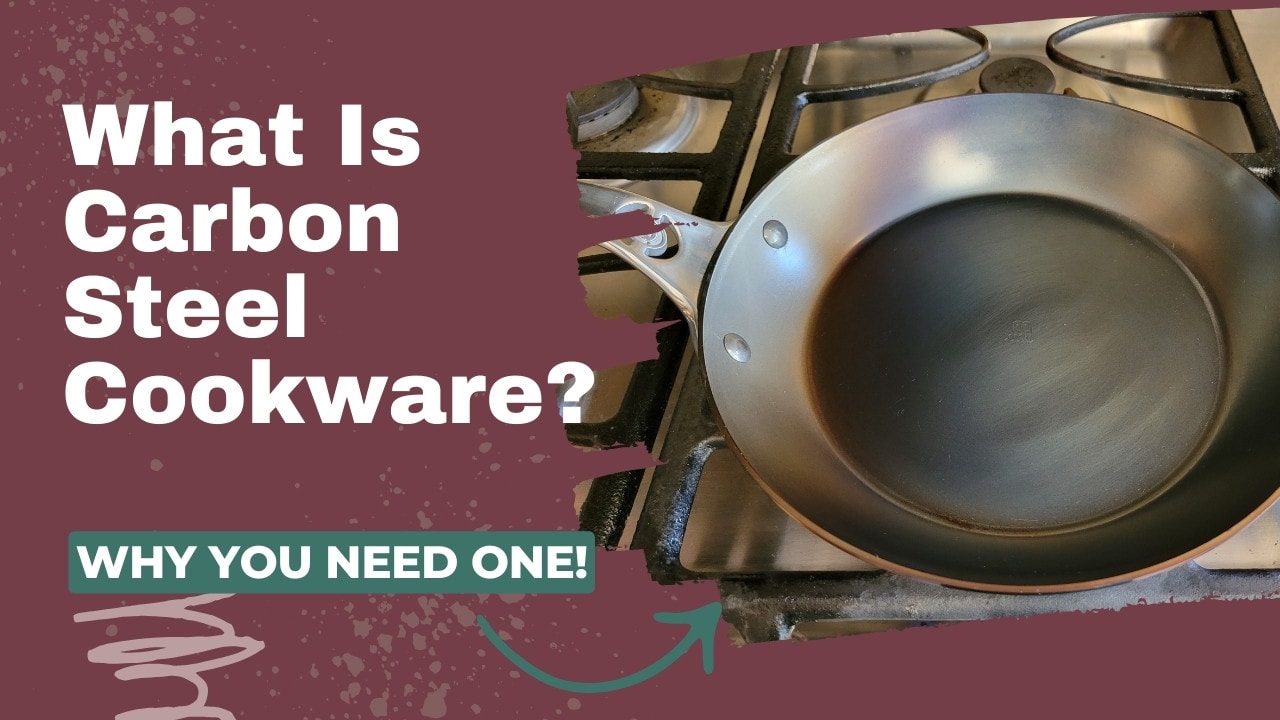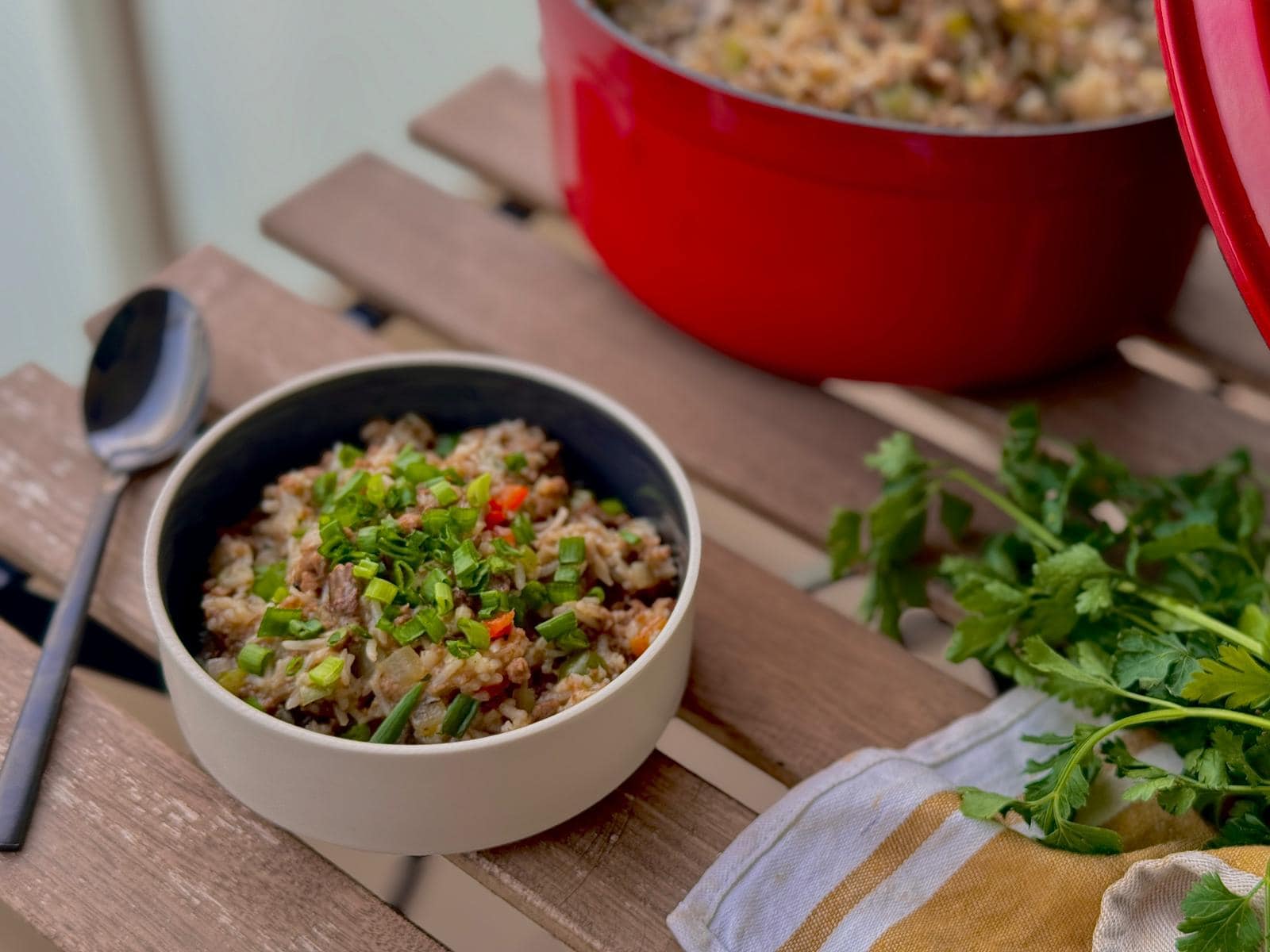When I started culinary school, I remember being overwhelmed by the cookware materials available and wondered why in the world you needed so many. But, now that I’ve worked in pro kitchens for a while, I’m ready with an answer for why one type of cookware stands out as a favorite: carbon steel.
Carbon steel is such a useful and interesting material, and I feel like the more you learn about it, the better you will use it!
So what exactly is carbon steel? How does it fit into your kitchen? Is it safe? What’s the maintenance like? I’ll answer all these questions and more.
What is Carbon Steel Cookware?
Carbon steel is a cookware material made from iron alloyed with a tiny bit of carbon. It is safe to use, withstands high temperatures, and is super versatile. The most common carbon steel pans are skillets and woks that are best used for searing and stir-frying. These pans require seasoning to maintain their semi-nonstick finish and prevent rust.
Pros
Cons
What is Carbon Steel Cookware Made From?
Carbon steel is an alloy of 98-99% iron and 1-2% carbon. This classifies it as a ferritic metal, which is induction-compatible.
Carbon steel pans are not cast, but rather spun or punched out of a sheet of metal. The thickness of the pan can range from 2mm to 3mm. In my opinion, the ideal thickness is around 2.5mm. This is heavy enough to be sturdy and well-balanced without being difficult to maneuver. And it’s not so thin that it will warp easily.
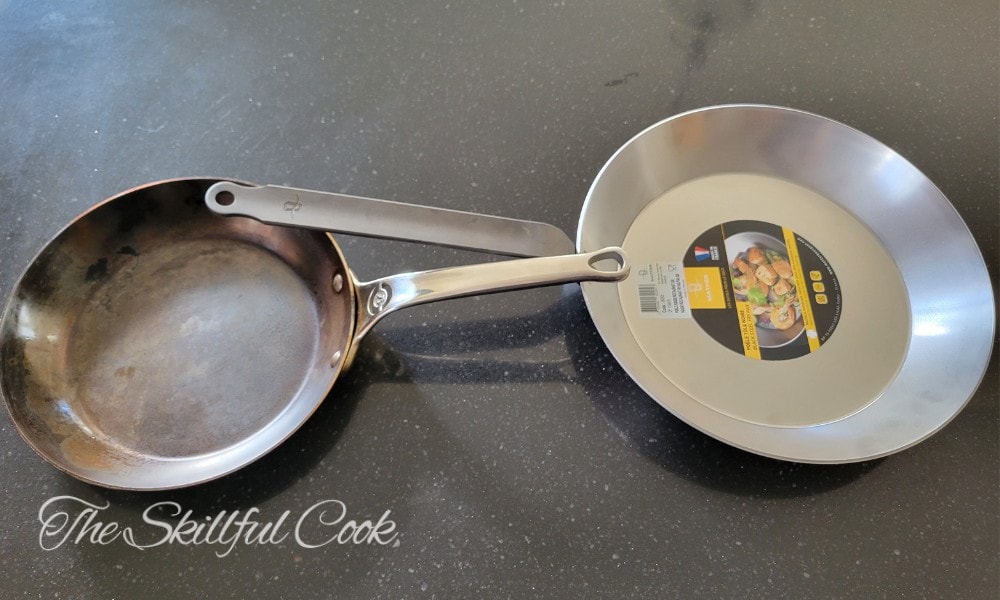
There is no nonstick coating applied to these pans, which makes them very durable. It’s even safe to use metal utensils on the surface without damaging it.
Most carbon steel cookware is made of a single layer of carbon steel, but a brand called Strata has just developed the world’s first clad carbon steel pan. The aim behind this pan is to benefit from the positive nonstick properties of carbon steel, but with better heat distribution and less weight.
What is Blue Carbon Steel Cookware?
Blue carbon steel is a pan that has gone through a process called annealing. This is when a heat treatment adds a layer of oxidation to the metal during manufacturing. This layer is meant to make the pan more attractive and corrosion-resistant.
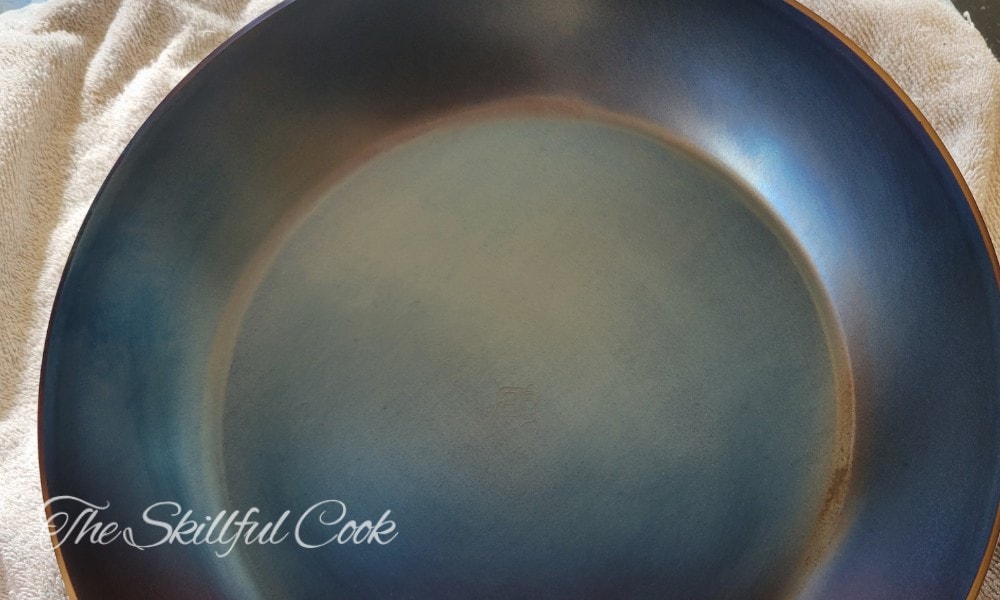
You will still need to season a blue carbon steel pan with oil. The blue tint will fade over time and turn black, which is a good indication that your pan is well-seasoned.
Types of Cookware
Carbon steel pans are most commonly fry pans, crepe pans, woks, and paella pans. Certain small brands also make gratins and baking trays. You won’t find carbon steel stock pots, because they are too easily dented.
How is Carbon Steel Cookware Used?
Cooking with carbon steel has a learning curve, but once you’ve mastered it, you’ll be reaching for these pans on the daily. The pan’s surface is semi-nonstick if you preheat it well and use enough oil.
It is also oven-safe if the handle is made from carbon steel or stainless steel without any coatings. This makes these pans very versatile, to the point that it may become your go-to pan for everyday breakfasts and dinners.
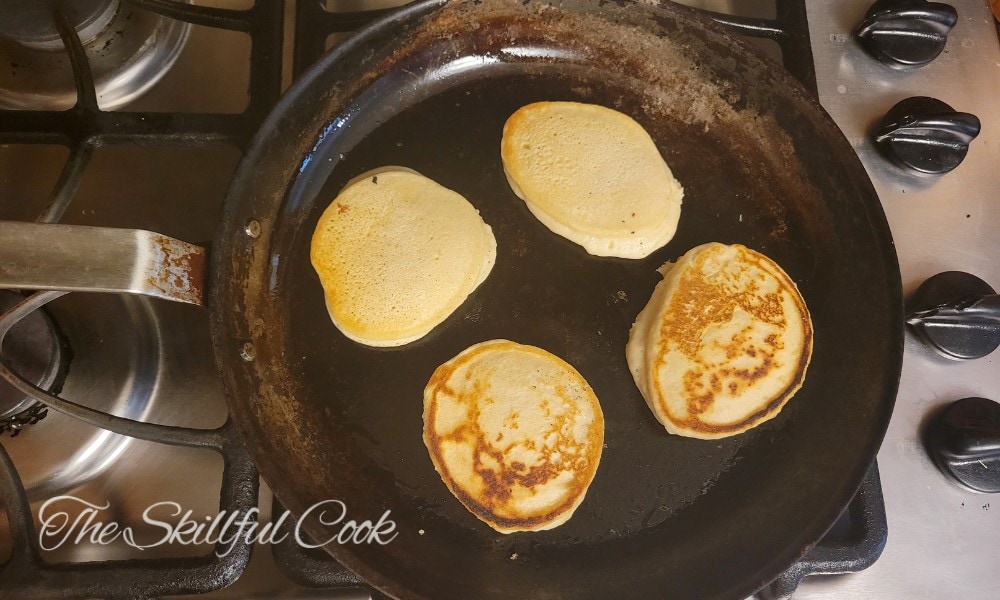
These pans are great for searing steaks and other robust proteins, great for pan or shallow frying, and wonderful for sauteing.
Personally, I won’t use any material besides carbon steel when I’m cooking steak or stir-frying. There really isn’t another material that can rival the high heat stability and rapid heat distribution, in my opinion. This versatility and durability make carbon steel pans very popular in restaurants.
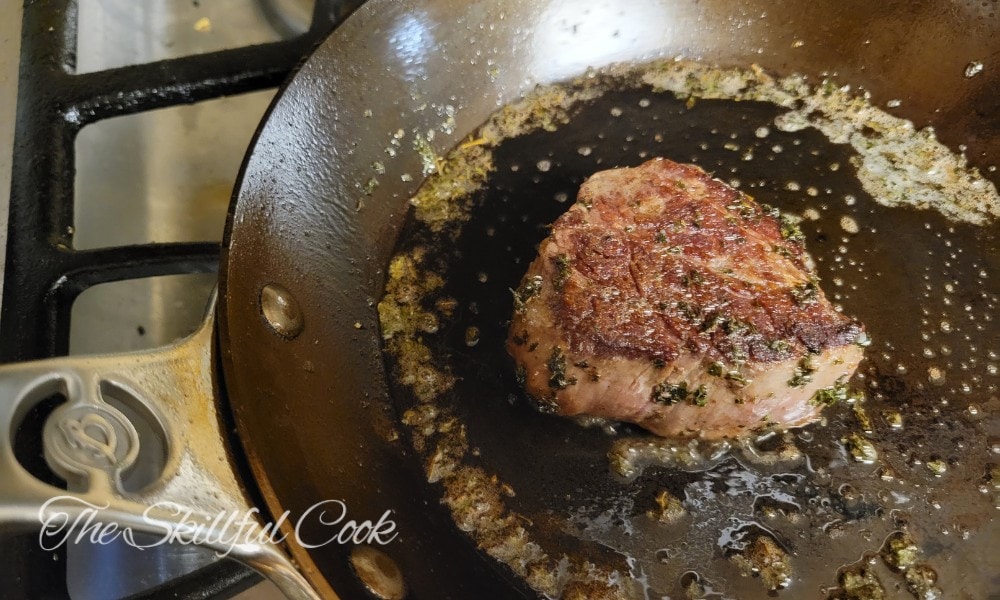
What Not to Cook in Carbon Steel
Is there anything you should avoid cooking in carbon steel? Since they are made of mostly iron, carbon steel pans are reactive to acidic foods, so it’s best to avoid cooking tomatoes and vinegar or wine-based sauces in them.
Delicate proteins may stick and break on carbon steel, so I recommend sticking to hardier proteins like steak or chicken. Sugary foods tend to bond with the seasoning on carbon steel and can potentially ruin it, so reserve confections for stainless steel, copper, or nonstick cookware instead.
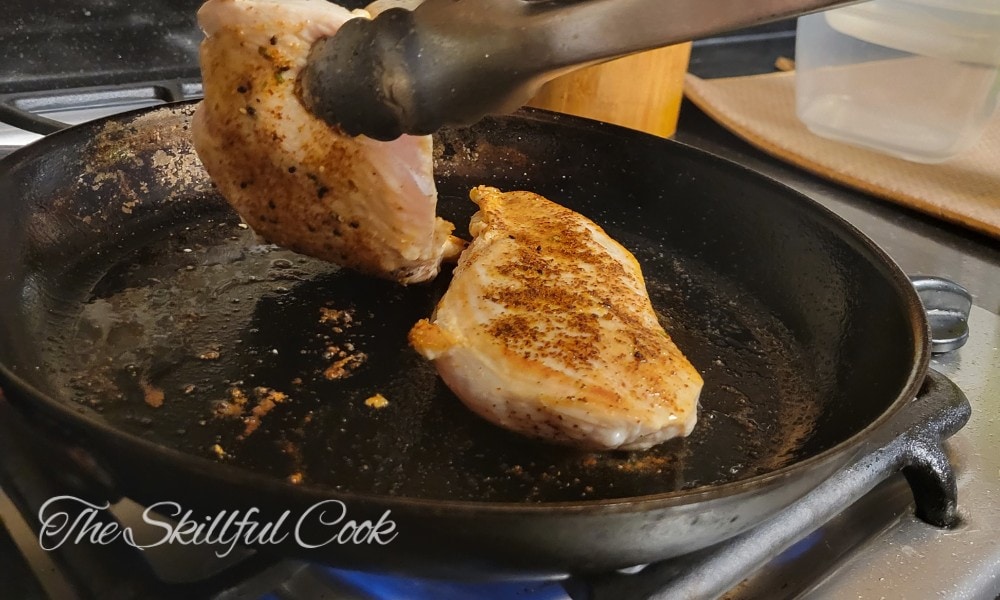
When it comes to cooking oil, I suggest sticking to high smoke point oils like canola, as low smoke point oils like olive oil can polymerize too quickly and adversely affect the seasoning.
Maintenance and Care
One of the main drawbacks to carbon steel is that it needs to be seasoned. Luckily, the seasoning process is relatively simple. Seasoning involves applying a thin layer of oil to your pan and heating that to its smoke point. This will polymerize the oil and bond it with the metal.
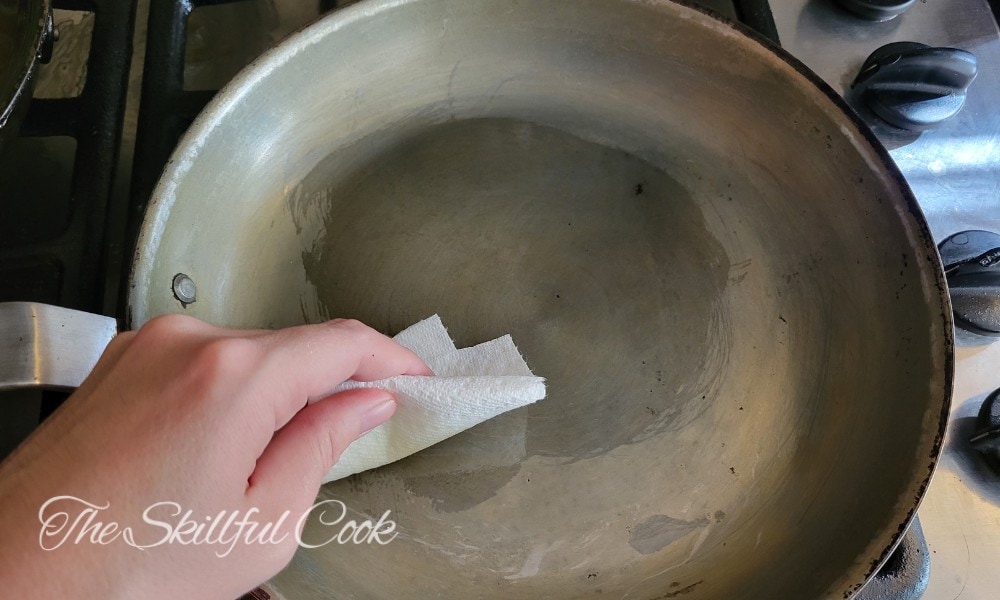
It’s important to choose the correct oil when seasoning and only use the tiniest drop. Set aside 5 minutes after cleaning your carbon steel to season it, and you should be able to build up a beautiful seasoning layer that is very close to nonstick.
Cleaning carbon steel is a little different from cleaning other pans. You want to be careful not to scrub off the seasoning you’ve worked so hard to develop. You can choose to clean it with a gentle oil-based soap, or you can forgo the soap altogether and simply wipe it out with a paper towel. If there are areas that need more elbow grease, sprinkle them with salt and use it as an abrasive to shift the stuck pieces. The more stubborn food residue can be boiled off on the stovetop.
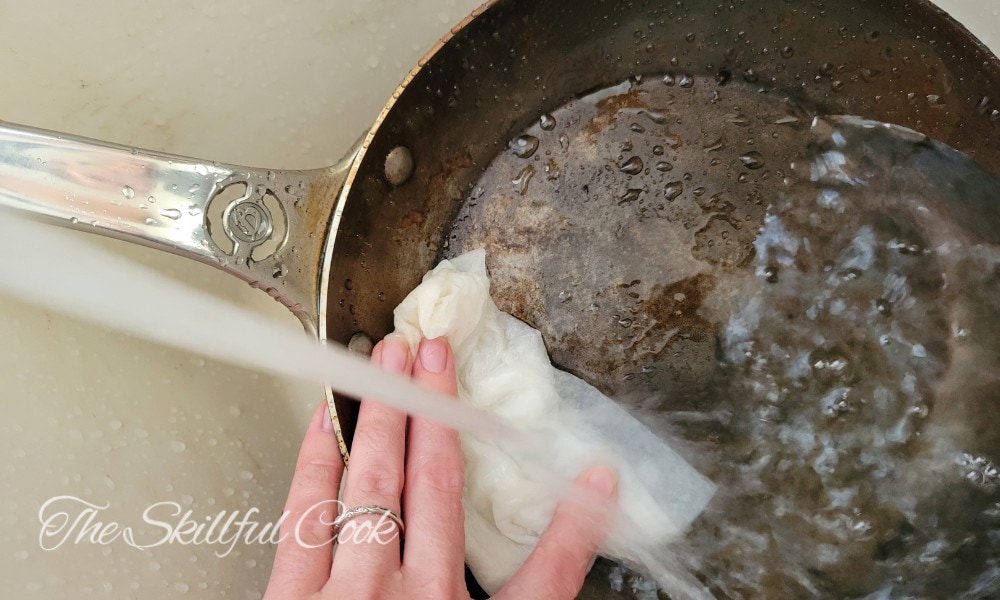
Worst case scenario, you’ll clean your pan too vigorously, and you might have to strip and reseason your pan, but this shouldn’t be the case if you maintain your pan well from the beginning.
Is Carbon Steel Safe?
So carbon steel is made of a very simple material, but does this mean it’s nontoxic and safe?
Please see our full article on this topic, linked above. In a nutshell, carbon steel is one of the safest cookware materials out there. Now, saying that, keep in mind that nothing is truly ever completely nontoxic. But these pans contain no chemical coatings, lead, or cadmium, making them very safe compared to competitors.
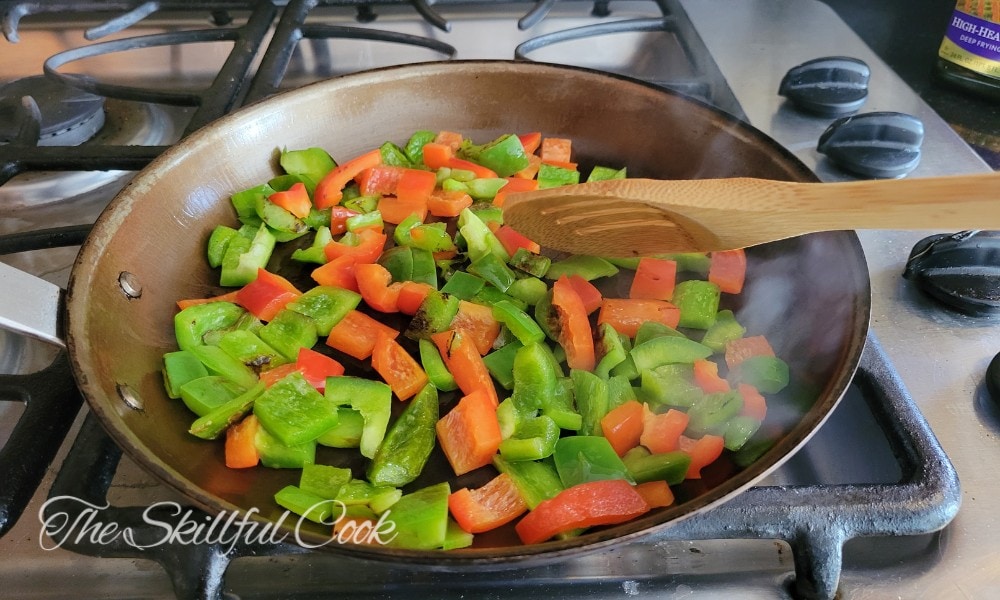
As mentioned above, carbon steel is reactive to acidic food, which can lead to small amounts of iron leaching into your food. The more seasoned your pan is, the less iron will be leached. In most cases, the added iron may be considered beneficial, but those with certain medical conditions (like hemochromatosis) may be adversely affected.
Best Carbon Steel Brands
There are many carbon steel brands available on the market, but here are my top picks:
Other good brands, ranging from budget to high-end, include:
Amazing Hand-Forged Options
If you like supporting small businesses (and why wouldn’t you?), then buying artisanal carbon steel is a great way to do that. There are so many carbon steel brands made in the USA, including some stunning hand-forged options. Here is a list of the small carbon steel brands made in the USA:
Carbon Steel vs. Cast Iron
Carbon steel and cast iron are two very similar materials. They are both made from iron alloyed with carbon. Surprisingly, cast iron has more carbon in the alloy than carbon steel does, so cast iron is thicker, heavier, and more brittle. Here are some other differences:
| Carbon Steel | Cast Iron |
|---|---|
| Medium-weight | Heavy |
| 98-99% iron | 96-98% iron |
| Reactive to acidic foods | Reactive to acidic foods |
| Needs to be seasoned | Needs to be seasoned |
| Easily dented | More durable |
| Punched out of a sheet | Cast in a mold |
| Prone to warping | Prone to cracking under thermal shock |
| Heats up quickly | Heats up slowly |
| Holds heat less effectively | Retains heat well |
| Hand wash only | Hand wash only |
| Handles high heat well | Handles high heat well |
Conclusion
Carbon steel is a great cookware material that, in my subjective (but professional) opinion, seems to just make food taste better. It may require some maintenance, but in my eyes, it’s well worth the work. I think every home cook could benefit from a carbon steel frying pan or wok in their collection.
Got any questions about carbon steel? Drop them below, and I will answer them.

